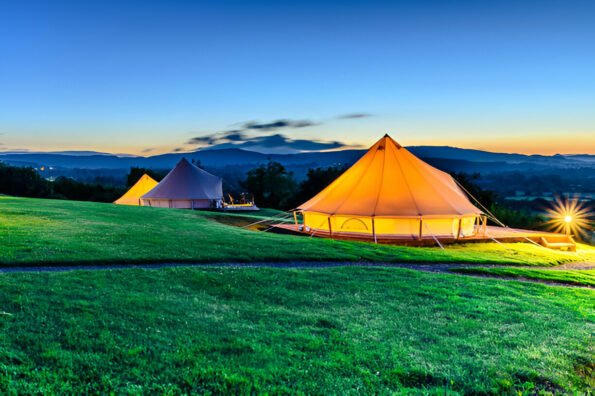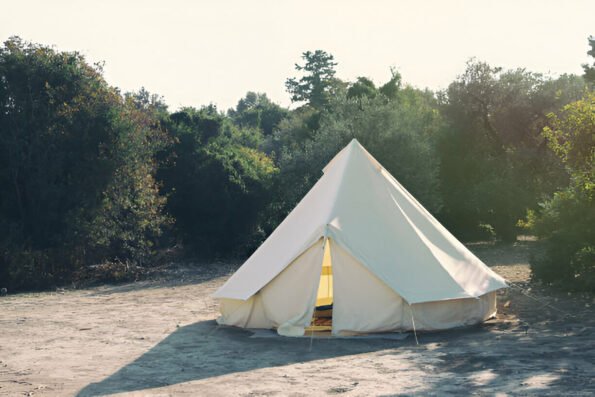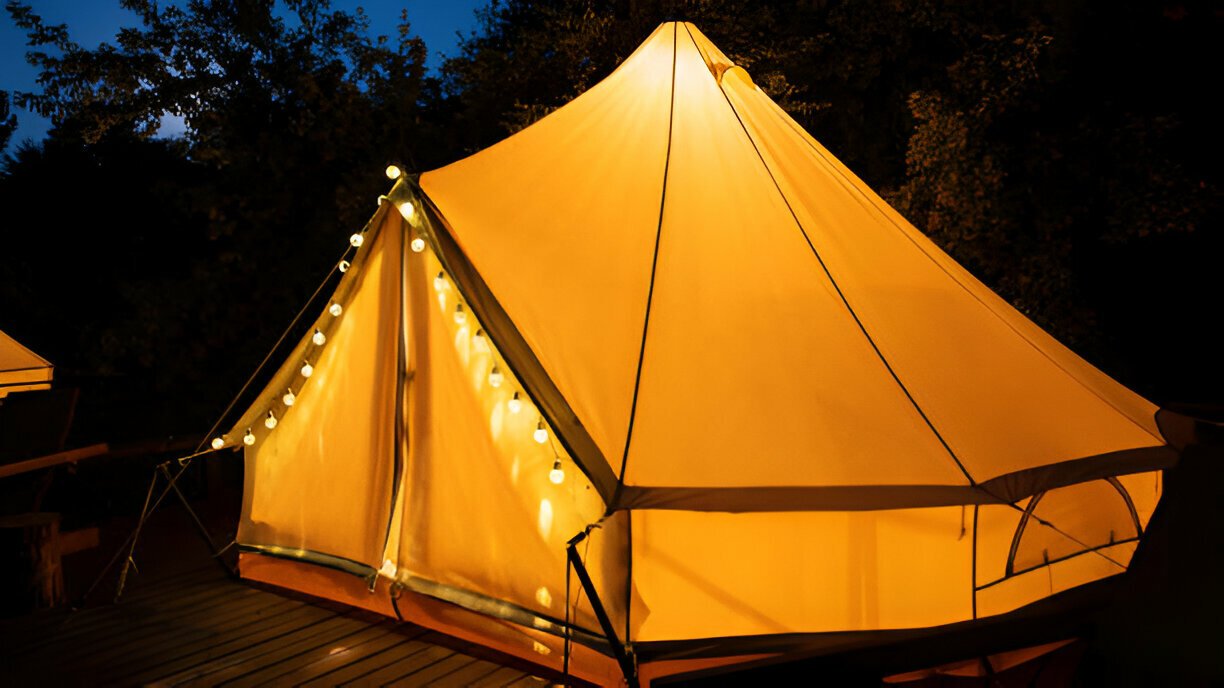Introduction
Welcome to the world of yurt tents! If you’re seeking a unique, comfortable, and eco-friendly accommodation for your next adventure, yurt tents might be just what you need. These fascinating structures offer a blend of tradition and modern convenience, making them an excellent choice for nature lovers and adventure seekers alike.
History of Yurts
Origins of Yurt Tents
Yurt tents have a rich history that dates back over three thousand years. Originally used by nomadic tribes in Central Asia, particularly the Mongols, these circular tents were designed for portability and resilience. The word “yurt” itself comes from the Turkic languages, meaning “home.”
Evolution of Yurt Design
Over the centuries, yurt designs have evolved significantly. The traditional yurts were made from wood and felt, providing excellent insulation and protection from harsh weather conditions. Modern yurts, however, incorporate advanced materials and technologies, enhancing durability and comfort while retaining their classic appeal.
Yurts in Modern Times
Today, yurts are no longer just the homes of nomads. They have found a place in the world of glamping, eco-resorts, and even as permanent residences. The fusion of traditional design with modern amenities has made yurts a popular choice for unique accommodations worldwide.
Benefits of Staying in Yurt Tents
Connection with Nature
One of the most compelling reasons to stay in a yurt is the connection it offers with nature. The circular design and natural materials create a serene and harmonious environment, perfect for relaxing and unwinding.
Comfort and Convenience
Despite their rustic appearance, modern yurts are incredibly comfortable. Many come equipped with cozy beds, electricity, and even plumbing. They provide a unique blend of camping and comfort, offering a memorable stay without sacrificing the conveniences of modern life.
Sustainability and Eco-Friendliness
Yurts are inherently eco-friendly. Their minimalistic design and use of natural materials reduce their environmental impact. Additionally, many yurt owners use solar panels, composting toilets, and other sustainable practices to further enhance their eco-friendliness.
Design and Structure of Yurt Tents
Traditional Yurt Design
Traditional yurts consist of a wooden frame covered with felt or canvas. The frame includes a circular base, wooden poles, and a central support structure. This design provides stability and can withstand strong winds and heavy snow.
Modern Yurt Innovations
Modern yurts incorporate various innovations to enhance their functionality. These include the use of high-tech fabrics for better insulation, windows for natural light, and even skylights for stargazing. These features make modern yurts suitable for year-round use.
Materials Used in Yurt Construction
The materials used in yurt construction have also evolved. While wood and felt are still common, many yurts now use synthetic fabrics, metal supports, and advanced insulation materials. These improvements increase durability and comfort, making yurts a viable option for long-term use.

Setting Up a Yurt Tent
Choosing the Right Location
Setting up a yurt begins with choosing the right location. Look for a flat, well-drained area with good access to sunlight and shelter from strong winds. The location should also comply with any local zoning and building regulations.
Assembling the Yurt Frame
The next step is assembling the yurt frame. This involves setting up the circular base, attaching the wall poles, and installing the central support structure. This process requires some basic tools and can usually be completed in a day or two.
Adding the Cover and Insulation
Once the frame is up, the next step is adding the cover and insulation. This typically involves draping a canvas or synthetic cover over the frame and securing it in place. Insulation can be added between the layers to improve thermal performance, ensuring the yurt remains comfortable in all weather conditions.
Interior Features of Yurt Tents
Layout and Space Utilization
The interior of a yurt can be customized to suit your needs. Many yurts have open floor plans, allowing you to arrange furniture and decor as you like. Some even have loft spaces or partitions for added privacy and functionality.
Essential Furniture and Decor
Furnishing a yurt can be a fun and creative process. Essential items include a comfortable bed, seating, and storage solutions. Many people also add personal touches like rugs, curtains, and artwork to make the space feel homier.
Heating and Cooling Options
To ensure comfort year-round, consider installing heating and cooling systems. Wood stoves are a popular choice for heating, providing both warmth and a cozy ambiance. For cooling, options include fans, ventilation systems, or even portable air conditioners.
Yurt Tents for Different Seasons
Staying Warm in Winter
Staying warm in a yurt during winter requires good insulation and a reliable heating source. In addition to a wood stove, consider adding insulated window covers and floor mats to keep the cold out and the heat in.
Keeping Cool in Summer
In summer, keeping your yurt cool can be achieved through proper ventilation and shading. Open windows and vents to allow airflow, and consider adding a reflective cover to the roof to reduce heat absorption.
All-Season Yurt Accessories
To make your yurt comfortable year-round, invest in all-season accessories. These might include thermal curtains, solar-powered fans, and moisture-resistant flooring. These additions can make a significant difference in your yurt’s livability.
Yurt Tents vs. Traditional Camping Tents
Space and Comfort Comparison
Compared to traditional camping tents, yurts offer significantly more space and comfort. The high ceilings and open layout provide a sense of roominess, making them ideal for longer stays or larger groups.
Durability and Longevity
Yurts are also more durable and long-lasting than typical camping tents. Their sturdy construction and use of high-quality materials mean they can withstand harsh weather conditions and regular use over many years.
Cost and Investment
While yurts are more expensive than traditional tents, they offer better value in the long run. The initial investment is higher, but the comfort, durability, and potential for year-round use make them a worthwhile investment.
Popular Destinations for Yurt Stays
Yurt Rentals in National Parks
Many national parks now offer yurt rentals as an alternative to traditional camping. These yurts provide a unique way to experience the natural beauty of the parks while enjoying added comfort and amenities.
Yurt Glamping Resorts
Glamping resorts featuring yurts have become increasingly popular. These resorts offer luxurious yurt accommodations with all the amenities of a high-end hotel, including private bathrooms, gourmet dining, and guided activities.
Yurt Retreats in Remote Locations
For those seeking solitude and a deeper connection with nature, yurt retreats in remote locations are an excellent option. These retreats often focus on wellness, offering activities like yoga, meditation, and nature walks.

Yurt Tents for Events and Gatherings
Hosting Events in Yurts
Yurts provide a unique and memorable venue for hosting events. Their spacious interiors and rustic charm make them perfect for gatherings such as family reunions, birthday parties, and community events.
Yurts for Weddings and Parties
Weddings and parties in yurts offer a distinctive setting that guests will remember for years. Decorate the yurt with lights, flowers, and personal touches to create a magical atmosphere for your special occasion.
Corporate Retreats and Team Building
Yurts are also ideal for corporate retreats and team-building events. The relaxed, natural setting fosters creativity and collaboration, making them a popular choice for companies looking to inspire and motivate their teams.
DIY Yurt Building
Planning Your DIY Yurt
Building your own yurt can be a rewarding project. Start by researching designs and creating a detailed plan. Consider factors like size, materials, and budget to ensure your yurt meets your needs.
Sourcing Materials and Tools
Next, source the materials and tools you’ll need. Many yurt kits are available that include all the necessary components, or you can purchase materials separately to customize your build.
Step-by-Step Building Process
The building process involves assembling the frame, adding the cover, and installing insulation. Detailed instructions and online tutorials can guide you through each step, making the project manageable even for beginners.
Maintenance and Care of Yurt Tents
Regular Cleaning and Upkeep
Maintaining a yurt involves regular cleaning and upkeep. Sweep the floors, dust surfaces, and check for any signs of wear and tear. Keeping your yurt clean and well-maintained will ensure its longevity.
Weatherproofing and Repairs
Weatherproofing is crucial to protect your yurt from the elements. Regularly inspect the cover and seams for any leaks or damage, and make repairs as needed to keep your yurt dry and comfortable.
Long-Term Storage Tips
If you need to store your yurt for an extended period, make sure to do so properly. Clean and dry all components thoroughly, and store them in a cool, dry place to prevent mold and mildew.
Yurt Tents and Sustainability
Eco-Friendly Living in Yurts
Living in a yurt promotes eco-friendly living. The smaller footprint and use of natural materials reduce environmental impact, making yurts a sustainable choice for those looking to minimize their carbon footprint.
Reducing Your Carbon Footprint
Yurts can further reduce your carbon footprint by incorporating renewable energy sources like solar panels and wind turbines. Composting toilets and greywater systems also help minimize water usage and waste.
Sustainable Yurt Accessories
Investing in sustainable accessories can enhance your yurt’s eco-friendliness. Consider items like solar-powered lights, biodegradable cleaning products, and recycled furniture to create an environmentally conscious living space.
Personal Stories and Experiences
Testimonials from Yurt Dwellers
Many people who have lived in yurts share positive experiences. They often highlight the sense of connection with nature, the simplicity of yurt living, and the unique comfort that yurts provide.
Memorable Yurt Adventures
Yurt adventures can be incredibly memorable. Whether it’s a cozy winter getaway in the mountains or a summer retreat by the lake, the unique charm of yurt living creates lasting memories.
Tips from Experienced Yurt Campers
Experienced yurt campers offer valuable tips, such as packing efficiently, preparing for different weather conditions, and making the most of the yurt’s space. Their insights can help new yurt dwellers have a smoother and more enjoyable experience.
Conclusion
In conclusion, yurt tents offer a unique and versatile accommodation option for your next adventure. Whether you’re looking for a comfortable glamping experience, an eco-friendly retreat, or a memorable event venue, yurts provide an excellent solution. Their rich history, modern conveniences, and connection to nature make them a perfect choice for anyone seeking a distinctive and sustainable way to experience the great outdoors. So why not give yurt living a try on your next trip? You might just fall in love with this unique and charming form of accommodation.
FAQs
What is the lifespan of a yurt tent?
The lifespan of a yurt tent can vary depending on the materials used and how well it is maintained. Generally, a well-cared-for yurt can last between 15 to 30 years.
Are yurt tents suitable for all weather conditions?
Yes, with proper insulation and weatherproofing, yurt tents can be suitable for all weather conditions. They are designed to withstand strong winds, heavy snow, and even hot climates.
Can I build a yurt tent on my own?
Absolutely! Many people successfully build their own yurts. There are plenty of resources and kits available that make the process accessible, even for beginners.
How much does it cost to rent a yurt tent?
The cost of renting a yurt tent varies based on location, size, and amenities. Prices typically range from $50 to $300 per night.
What should I bring for a yurt camping trip?
For a yurt camping trip, bring essentials like bedding, cooking supplies, food, and clothing appropriate for the weather. Additional items might include toiletries, a flashlight, and outdoor gear for activities.











